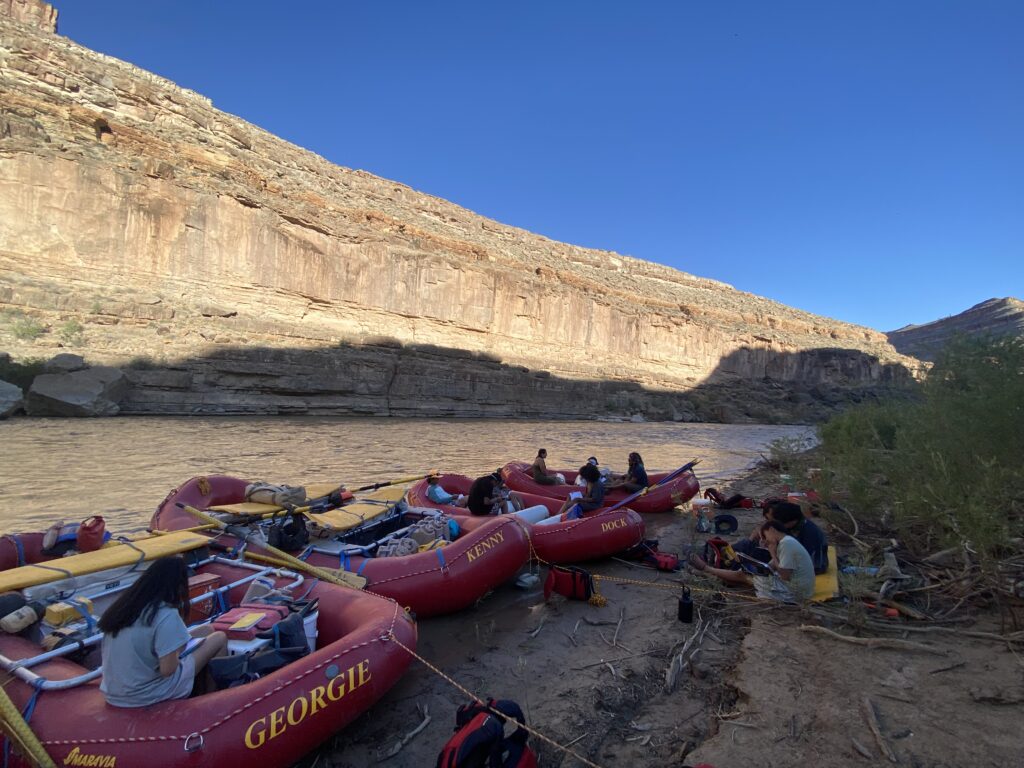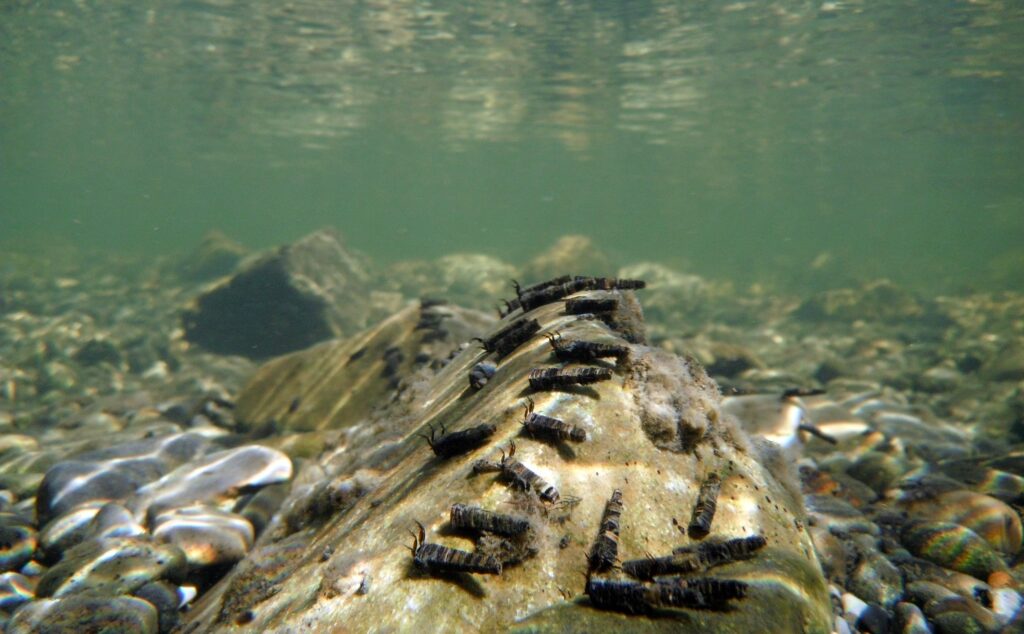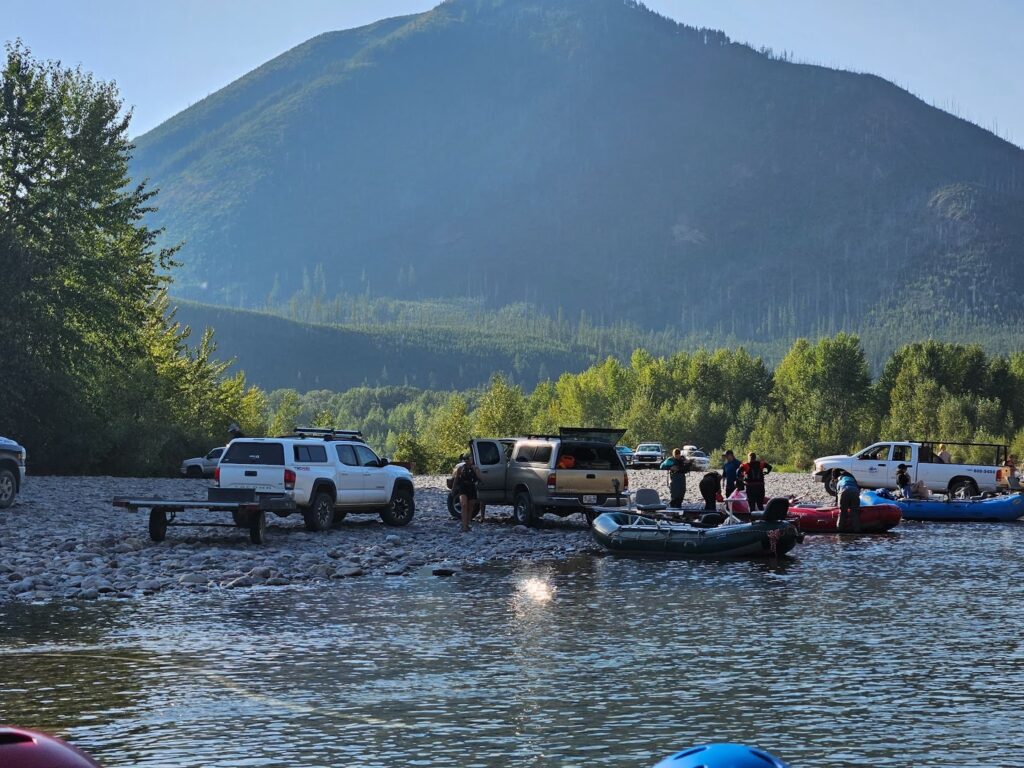We Are All From Here
American Rivers' Chris Williams tells the story of a recent trip accompanying native tribal leaders down the Colorado River in the Grand Canyon.
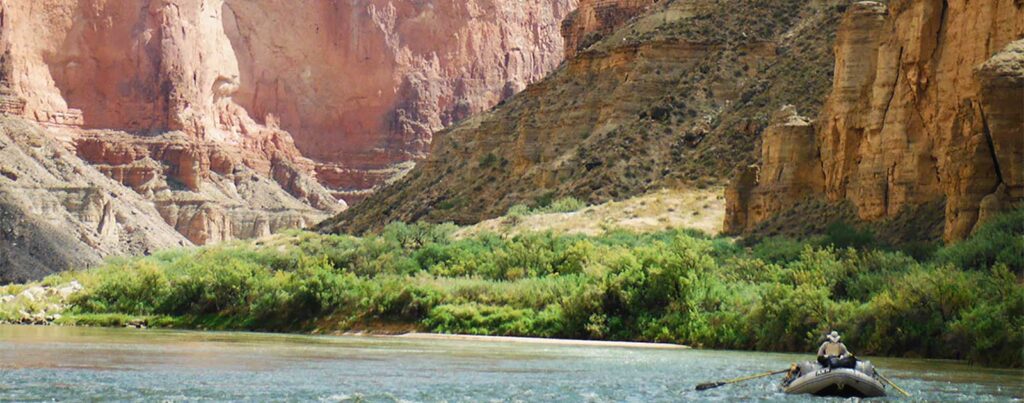
Two weeks ago, I had the opportunity to travel down the Colorado River in the Grand Canyon with as diverse a group of people as you’re likely to meet. Included in the mix were a cattle rancher, an anthropologist, a jeweler, a Hollywood producer, a former U.S. Senator, a community organizer, a former firefighter, a Vietnam veteran, a biotech millionaire, a retired police officer, and a smattering of tree-hugging environmentalists like myself.
What brought us together was more than scenic marvels, campfire songs, and white-knuckle descents of the Canyon’s many rapids, although the trip was all of that. We were there to take a journey through time as well as space, visiting the Canyon’s geologic and cultural past and pondering its uncertain future.
A trip through the Grand Canyon is a thrill ride for geology buffs. Some of the oldest rock on the surface of the earth – up to 2 billion years old – can be found there. The clash of tectonic plates, the layering and twisting of volcanic and sedimentary rock, the rise and recession of new mountains and ancient oceans over geologic time have written the history of our planet on the canyon walls. The latest chapter of that history is still being drafted as the sediment and erosive power of the Colorado River continues to sculpt and shape the canyon floor.
While the geologic history of the Canyon is on gigantic display all around you, its equally compelling cultural history is less conspicuous. You have to know exactly where to look. You have to listen very closely. Most importantly, you have to have the right guides. And that’s what made this particular trip to the Canyon so special.
The ex-cop on the trip was Merv Yoyetawa, a Hopi tribal leader; the jeweler was Octavius Seowtawa, a cultural leader of the A:shiwi (Zuni) people; the former firefighter was Bennett Jackson, a Hualapai now with the tribe’s Department of Cultural Resources; the Vietnam vet was Barney “Rocky” Imus, a Hualapai tribal elder; and the rancher and community organizer were Earlene Reid and Sarana Riggs, Navajo women and founding members of Save the Confluence, a group of activists fighting to preserve an important piece of the Canyon’s cultural tradition.
Together, these native leaders, representing four of the eleven tribes of the region, guided us to important and sacred sites, allowed us to watch and sometimes participate in their ceremonies of respect and reverence, and shared with us the histories of their peoples and their deep spiritual connections to the Colorado River and the Grand Canyon.
The histories of the Hopi, A:shiwi, Hualupai, and Navajo peoples begin in and around the Grand Canyon. The A:shiwi, for example, emerged into this world (from a previous one, a long story) near what we now call Ribbon Falls. Their first glimpses of the new world, the heart of the Grand Canyon, still feature in their stories, songs, and religious ceremonies. Shortly after they emerged, the A:shiwi began their quest for the “middle place,” where they were destined to settle.
Their travels took them up the Little Colorado River and to the headwaters of its tributary the Zuni River in New Mexico, where they have lived ever since. The other tribes of the region have similar stories, though each has its unique cultural and historical elements. In addition to its importance as the place of emergence, the Canyon has served the tribes at various times as a refuge from attack, a hiding place for goods, a provider of life-giving salt, and a source of food in times of scarcity. The natives of the region revere the Canyon, and make little distinction between the living and their surroundings. The Grand Canyon’s rivers and rock walls, seeps and springs are as alive as any person.
One such sacred place is the confluence of the Little Colorado and Colorado rivers, a locale of spectacular isolation. Standing on the banks of the muddy Little Colorado just above the confluence, I listened with the group as Sarana told the story of when Changing Woman, the creator of the Navajo people, passed this way on her way to and from the ocean. Merv told us that not far up the river from the spot where we stood, the Hopi emerged into this world and took up their sacred duty to ensure that the rains fall and the springs flow with life-giving water. Just downriver is where developers are pushing a proposal for a tram – the Escalade project – that would transport up to 10,000 tourists a day to sight-see, dine, and shop.
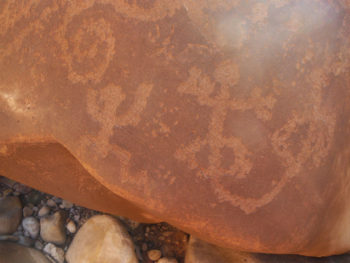
An ancient Grand Canyon petroglyph
It’s the Escalade that brought this group together in the first place. The project is opposed by environmental groups as an affront to the scenic beauty and natural grandeur that make the Grand Canyon a national, indeed a global, treasure. Though it enjoys some support among the Navajo, many, like Sarana and Earline, see it as an assault on their spiritual beliefs and their traditional way of life.
It is opposed by native leaders of the Hopi, A:shiwi, Hualupai and other Grand Canyon tribes that don’t always unite in common purpose.
As we traveled together by raft and oar boat for seven days, six nights and 87 miles down the Colorado in the upper Grand Canyon, the conversation ranged beyond Escalade to include the many other threats to the beauty, sanctity, and ecological health of the Canyon: potentially unfettered development in gateway communities, new mining and the dangers posed by old, polluted mine sites, excessive demand on groundwater and its potential impact on the Canyon’s vital springs, and the health of the Colorado River itself. We also shared meals, swapped stories, sang songs, and tossed around pop cultural references – at various times, I found myself explaining the mythology of “Transformers” to a former US Senator, exchanging views on the merits of diet soda with a Hualapai tribal official, and discussing with a Hopi Tribal Council member whether Tony Romo will ever win a Super Bowl (we disagreed).
In other words, the Canyon had, as one participant put it, “worked its magic.” We had arrived as strangers, and our shared adventure in the Canyon had forged us into a group of friends with a common purpose: to build upon what we had learned about the issues and about each other, to pool our talents, knowledge, and resources to save the Grand Canyon.
Perhaps the most important thing I learned on the trip was the power of story in the Grand Canyon. I’ve told many people the story of the Canyon from the perspective of an “Anglo” conservationist: It is a place of truly unique natural grandeur and a national treasure, and the Escalade and other development schemes threaten to destroy the very attributes that make the Canyon so special. The Native people tell a different story, one of history and culture and great spiritual power. They tell of how their history begins in the Grand Canyon, and how it remains, for them, the center of the world.
The stories are complementary, and are symbolic of how national, regional, and tribal groups can work together to secure the future of the Grand Canyon. It’s a future that I have a greater stake in than I once thought. As Merv explained it, it wasn’t just the Hopi that emerged at Sisapuni on the Little Colorado. It was all people, and the spirits of all people will eventually return. As he looked around the circle at all of us, with all our diverse backgrounds, he smiled and said, “We are all from here.”
